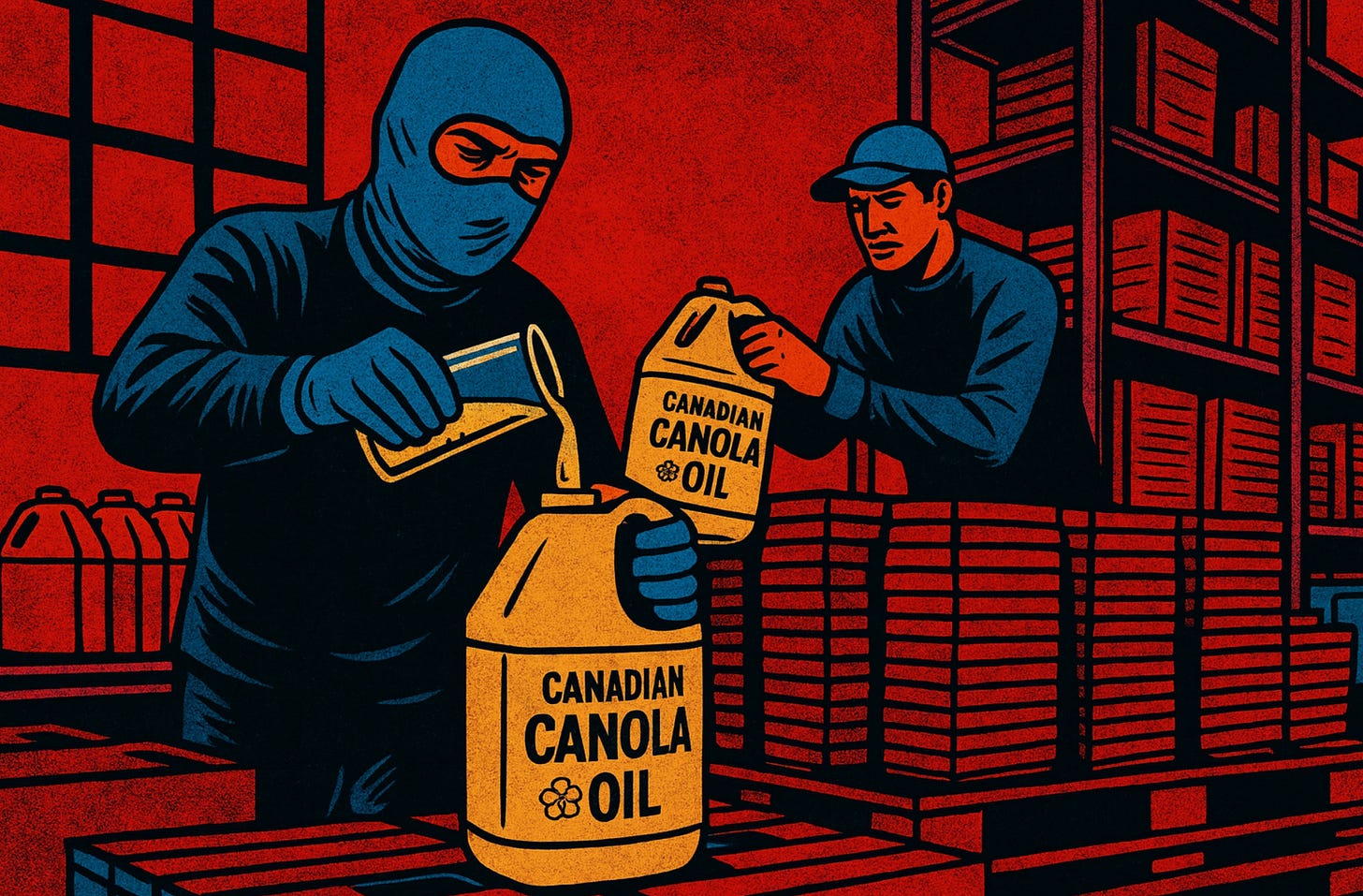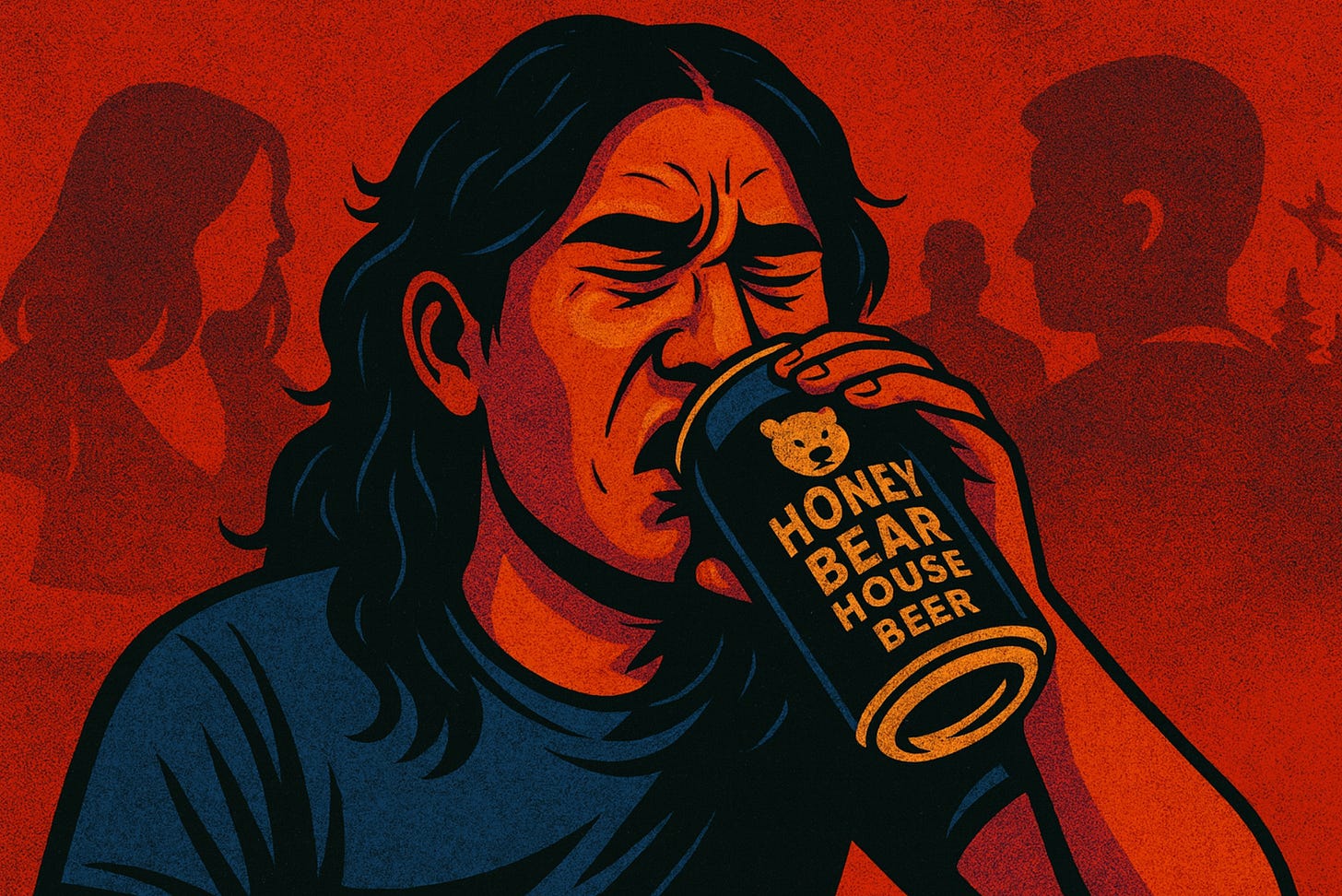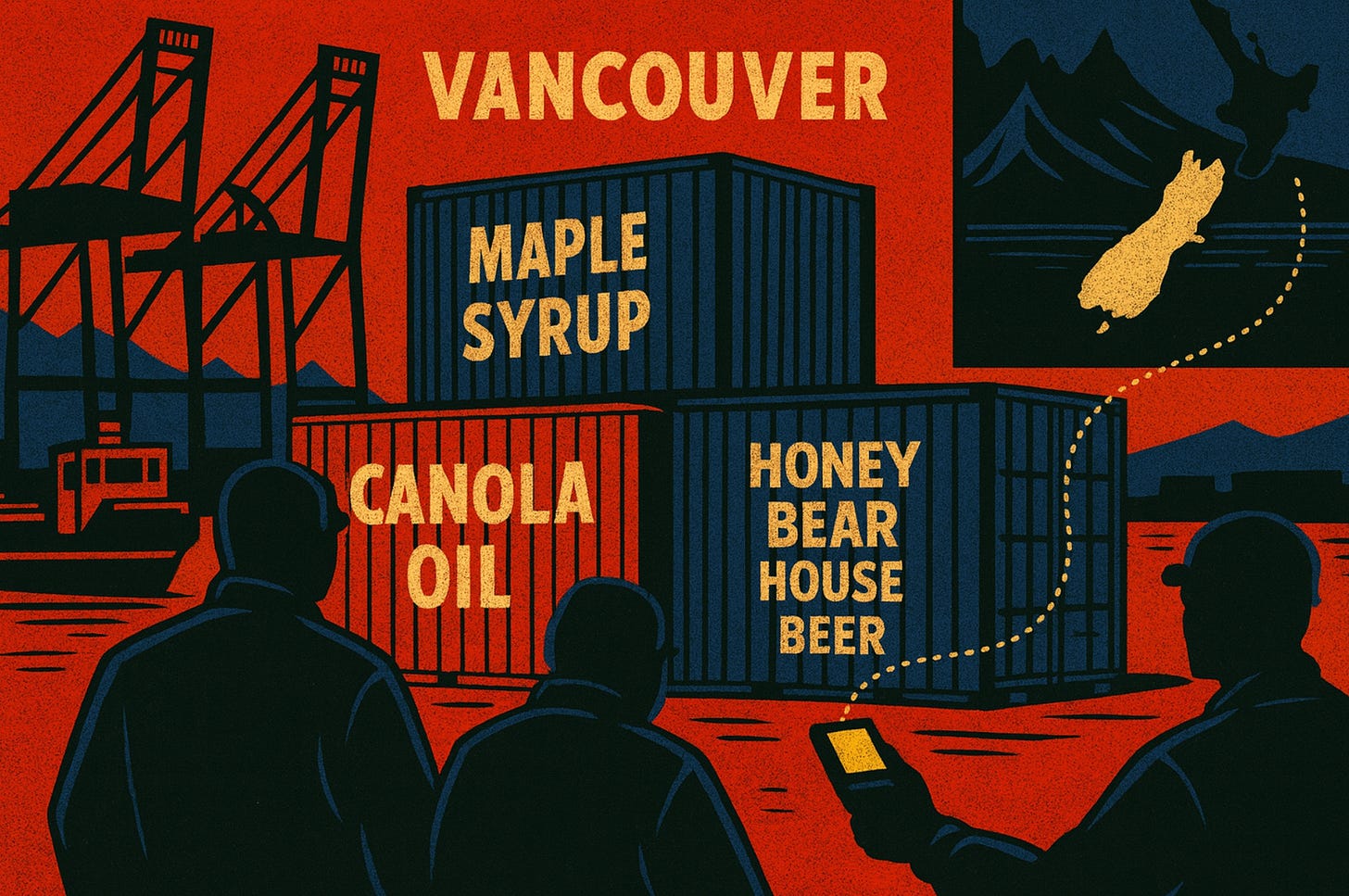From BC Bud to Ecstasy, Meth, and Fentanyl: How Canada’s Vast Landscape and Permissive Laws Were Progressively Exploited by Chinese and Mexican Cartels
“Canada has been a major exporter of illicit drugs for decades,” a whistleblower says — blaming vast terrain, weak port security, lenient sentences, RCMP failures, and corruption.
OTTAWA — Over the past month, The Bureau has traced a pattern of numerous cases linking Canada—especially Vancouver’s port and airport—to methamphetamine pipelines feeding overseas markets including New Zealand and Australia. Reporting uncovered prosecutions showing methods engineered to exploit not only Canada’s transportation infrastructure but also its international image and brand. In January 2023, three men were convicted in the largest meth seizure ever at New Zealand’s border: 713.8 kilograms disguised as maple syrup bottles shipped from Vancouver.
Yesterday in Australia, a drug importer was sentenced over a scheme that used 18 pallets of “canola oil” jugs shipped from Vancouver to conceal liquid methamphetamine. Prosecutors said the load hid 629 kilograms—worth about 150 million Australian dollars—and the Australian ringleader, taking direction from Canada-based traffickers, had agreed to receive it. In a twist, before the container left Vancouver in January 2023, police quietly swapped the meth for genuine Canadian canola, enabling the Australian Federal Police to run a controlled sting and charge low-level operatives, while the Canadian kingpins remained at large.
This week, CTV News amplified The Bureau’s findings, reporting that the death of 21-year-old Aucklander Aiden Sagala—who unknowingly drank pure liquid meth concealed in cans labeled “Honey Bear House Beer,” part of a large shipment of counterfeit beer exported from Canada—triggered a major police inquiry. The operation bore hallmarks of Mexican cartels and Chinese triads, groups long tied to mass-scale counterfeiting of international cigarette brands, including from factories on First Nations lands in Ontario. New Zealand authorities, in turn, underscored the scale and sophistication of Canada’s role in global synthetic-narcotics trafficking.
In recent interviews, Derek Maltz, former chief of the U.S. Drug Enforcement Administration, told The Bureau these patterns fit global shifts that accelerated after 2015: Chinese networks supply chemical precursors and launder proceeds alongside Mexican cartels’ production and logistics—a model first seen more than 20 years ago with a massive methamphetamine factory in Toluca, just outside Mexico City, where a DEA-driven probe culminated in the seizure of more than $200 million in cash from the factory owner’s mansion. The Chinese businessman behind that operation—tied to state-owned chemical suppliers—resembles actors now increasingly anchored in Canada, Maltz and other former DEA officials believe.
“They’re getting inundated in Australia with cocaine. Same with New Zealand. And now, of course, they’re getting hit with fentanyl shipments. And I believe — I don’t have proof of this — that a lot of it’s coming from these Canadian production operations,” Maltz said.
But who are the kingpins behind these multinational, multicultural pipelines? The Bureau’s review of New Zealand Customs records points to a particular Chinese Triad network with “command and control” elements in Vancouver and Toronto, according to U.S. investigations—overarching lesser players, including the Mexican cartels. The network, known as Sam Gor, is credited with architecting the money-laundering and synthetic-lab systems that have inundated Vancouver and operate across Canada, with evidence also pointing to Western Hemisphere money-laundering command in Toronto, according to former senior Trump administration official David Asher.
Sam Gor’s increasing use of Canada can be traced in part to a then‑record 2016 bust targeting a China–New Zealand pipeline. In that 2015–2016 case, Customs identified a shell company set up to smuggle crystal meth, intercepted ten China‑origin shipping containers, and found multiple packages concealed in door cavities—ultimately seizing an estimated 176 kilograms. A 20‑year‑old Hong Kong national was charged, and Customs vowed coordinated follow‑ups with counterparts in Hong Kong and mainland China.
Subsequent prosecutions and seizures point to Sam Gor’s adaptation: consignments routed via Canada grew increasingly prominent, exploiting Vancouver’s port and airport, blending passenger couriers with air freight, and deploying “shore parties” in New Zealand—operating under the cover of beach-house gatherings in short-term rentals—to receive shipments.
The “shore party” method—reminiscent of military precision and tactics—is illustrated by Operation Manta, which began in mid-2019 as a Customs-led investigation into an overseas criminal syndicate seeking to expand into New Zealand. Investigators identified several people—so-called “shore parties”—who had traveled to New Zealand to receive and distribute drug shipments and had set up a pseudo-company to facilitate this. Customs front-line officers located 469 kilograms of methamphetamine hidden in a shipment of electrical motors sent from Thailand, and a joint investigation linked the individuals involved, culminating in arrests in September 2019.
One of the “shore parties”—Canadian national The-Hoang Thai, 25—was sentenced to 20 years’ imprisonment for importing methamphetamine. Canadian Harpreet Lidder, 26, was also arrested at the time and, in July 2020, received a nine-year sentence following convictions; a further 15 kilograms of methamphetamine and 2 kilograms of MDMA were found in his New Zealand rental home.
A Canadian police-intelligence source says equivalent patterns—short-term rentals used to broker marijuana deliveries by Chinese crime cells in Western Canada—were identified in Vancouver around 2016, linked to Sam Gor–connected casino money-laundering and fentanyl-trafficking suspects tied to Beijing’s diplomats and the United Front interference network in British Columbia.
A 2018 case emerged in parallel. In 2023, Hong Kong national Chi Pang Li was sentenced to ten years and four months for operating a postal pipeline that moved 20.9 kilograms of methamphetamine from Canada to New Zealand, using fictitious names and short-term rentals to ship and receive parcels—methods consistent with Canadian trafficking patterns exploiting the country’s Non-Resident Importer system. That system has enabled networks to receive China-sourced precursors and supply clandestine labs in British Columbia. Li had also abused his New Zealand travel visa, another tactic widely used by “students” in Canada working within Mexican–Chinese narco networks.
The Bureau has mapped these networks—and Canada’s exploitation—by analyzing dozens of court cases internationally and interviewing numerous officers and experts, some named and others anonymous.
Today’s story draws on extended private statements from several Canadian police-intelligence whistleblowers who are not authorized to be identified. Their accounts deepen understanding of the crisis, explaining how Canada has been quietly exploited to become, improbably, a global exporter of lethal synthetic narcotics.
The source quoted at length below partially informed The Bureau’s testimony in Ottawa last week. That appearance prompted sustained questioning from Conservative public safety critic MP Frank Caputo who—citing our reporting—asked whether corruption concerns at senior levels in Ottawa, including within the Royal Canadian Mounted Police, could help explain Canada’s border vulnerabilities. The answer—repeatedly—was “yes.”
In response to that testimony and New Zealand methamphetamine reporting, the source contacted us again with the following comment:
“It is disgraceful that Canada is now recognized by our partners as a source country,” they said. “You can also include that many experienced officers were questioning directives from Ottawa related to which organized crime should be investigated and which investigations would receive higher priority and therefore funding. The directives did not align with regional intelligence and intelligence shared by foreign partners. We openly discussed amongst ourselves the real potential of corruption at some level.”
“Canada has been a major exporter of illicit drugs for decades”
In an extended statement, the source reiterated, “Canada has been a major exporter of illicit drugs for decades,” pointing to soft marijuana laws in British Columbia and the related growth of international exports of so-called “BC Bud” — a potent brand of cannabis popular from New York to Mexico City to Japan.
“Initially marijuana was produced in huge amounts in Canada and exported to the United States and worldwide,” the Canadian criminal-intelligence veteran said. “There are countless seizures, arrests and successful prosecutions to validate this claim.”
From that base, the source said, foreign criminal organizations came to recognize Canada as an advantageous hub for high-level trafficking — not because of a single factor, but a constellation of them.
“Canada’s massive land area with near limitless rural locations with little or no policing in these areas were easily exploited for commercial marijuana operations,” they said. “ As Canadian criminals branched out and worked with foreign drug traffickers many quickly realized if these locations worked to grow marijuana on a commercial scale they could just as easily be used to produce meth, fentanyl, ecstasy and other illicit drugs.”
Over time, the same smuggling architecture was repurposed for synthetics.
“As time passed,” the source said, foreign gangs “realized that Canadian marijuana drug smuggling practices were so effective for shipping large amounts of marijuana to the USA and elsewhere, that they could be easily tweaked to accommodate chemical drugs, all of which take up less space on a pound for pound basis than marijuana.”
That shift was made even easier by systemic vulnerabilities.
“To make things even easier it was common knowledge that Canadian ports are not secure and bringing precursor chemicals into Canada without detection would be easy,” they said. “Once in Canada the chemicals were then easily transported to countless locations, rural and urban, for processing and distribution world wide.”
And, the source argued, legal leniency amplified the pull factors.
“Adding to the ease and desire of operating in Canada are lenient criminal sentencing guidelines based on decades of case law that has shortened prison sentences,” they said. “A drug trafficker convicted in China for example could face the death penalty. In the USA this same criminal might receive a 20-30 year sentence. In Canada the jail sentences are much lighter. The lower risk makes Canada very attractive to criminals.”
Procedural hurdles then compound the problem at prosecution.
Echoing The Bureau’s testimony in Ottawa last week, the source said that securing convictions in complex, high-level trafficking cases is unusually difficult in Canada for a combination of procedural and structural reasons.
“Canada’s disclosure laws have resulted in police being bogged down with submitting virtually every piece of paper, email, note included in the investigation,” they said. “While this disclosure does protect Canadians from having relevant information withheld from the courts, it nonetheless is a double edged sword that has been exploited countless times by criminals and their defence teams.”
They explained that defence teams mine vast disclosures for any unvetted material touching witnesses or informants; if something slips through, cases can be stayed by Crown counsel. Repeated, expansive disclosure demands extend timelines; many files never reach trial due to prosecutorial-delay rulings now strictly enforced by Canadian courts.
The dynamic was visible in one of the country’s most consequential failures: E-Pirate — a case targeting elite Sam Gor suspects that, at the margins, exposed uncomfortable political proximity across federal, provincial, and municipal levels. As previously reported by The Bureau and The Globe and Mail, federal agents grew concerned after Prime Minister Justin Trudeau was inadvertently captured on surveillance during a meeting at a Vancouver-area hotel with several individuals alleged to be tied to casino money-laundering and fentanyl networks linked to E-Pirate. The purpose of that meeting has not been disclosed by any of the parties. The Chinese suspects, according to photographic evidence, are repeatedly linked to Chinese diplomats and United Front officials, as well as numerous Canadian politicians.
“Defence lawyers pore over the paperwork, and if police have inadvertently submitted a document that required some level of vetting to protect witnesses or informants, the investigation will be stayed by Crown Counsel. E-Pirate in British Columbia, a large money-laundering investigation tied to high-level drug trafficking, is a good example of this,” the source said. “Canadian disclosure laws are exploited by defence lawyers in Canada. Countless requests are made for more and more documents, resulting in time delays, and many cases never see a courtroom due to ‘prosecutorial’ delays that are now strictly enforced by Canadian courts.”
The consequences, they added, extend beyond Canada’s borders. The national-security implications are direct.
“I have firsthand been told by high-level American law enforcement officials that the Five Eyes group routinely excludes Canada from intelligence sharing due to fear of Canada’s disclosure laws,” they said.
“Canada’s legal failures are so well known now to American agencies,” they continued, adding “to make matters worse, these disclosure requirements have resulted in foreign law enforcement agencies having to cooperate less and less with Canadian police, as they know providing any information could result in it being released in court.”
“An example here would be U.S. Homeland Security running a years-long undercover operation into drug importation into the United States from Canada.”
Keep reading with a 7-day free trial
Subscribe to The Bureau to keep reading this post and get 7 days of free access to the full post archives.







